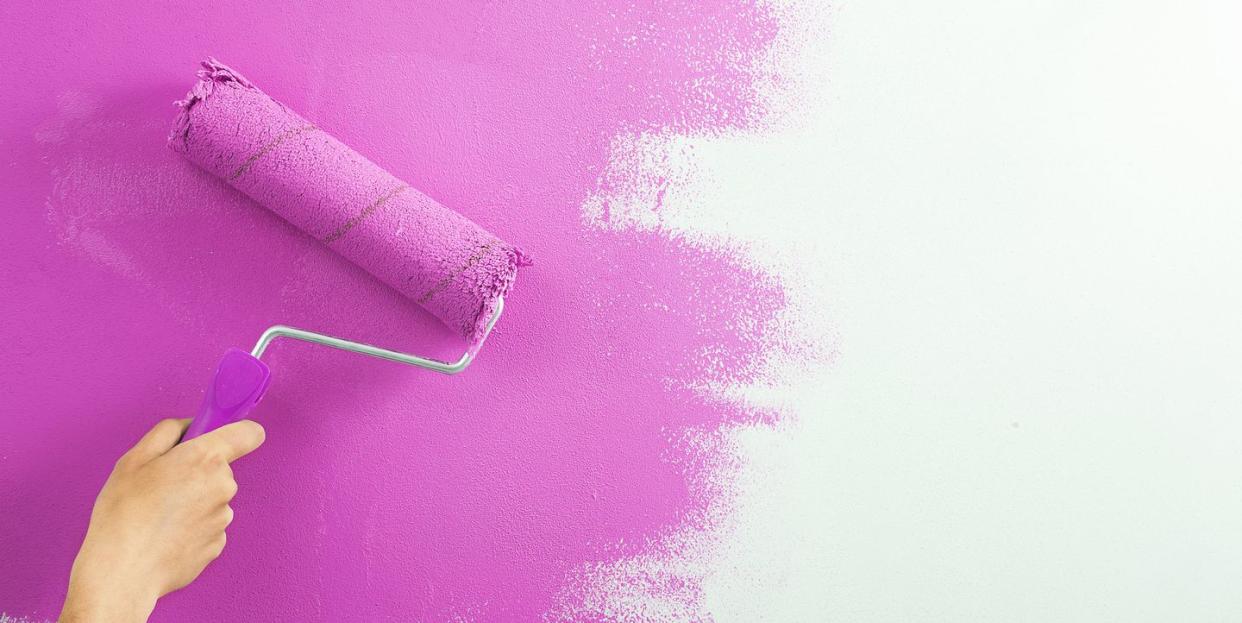Here's Everything You Need to Know About Flat Paint

Embarking on a paint project? Before you pick up that brush, you'll want to know exactly what finish you're using-and whether it's right for the certain surface you've chosen to DIY. One of the most popular paint finishes is a flat finish, but what exactly is it? Follow this handy guide and find out everything you need to know about flat paint.
What is flat paint?
Flat paint has more pigment than any other finish, which is why it's also known as concealer paint-it's also called matte paint. It's completely nonreflective, so the paint will soak up any light directed at it. Flat paint tends to be easier to apply than other finishes, and it also usually a less expensive option.
When should I be using flat paint?
You should be using flat paint on walls and areas that have a lot of bumps, scratches, or holes. Since it can conceal these blemishes easily, it'll be the one paint finish you'll want to be using. It's best for low-traffic rooms that have a ton of light like offices and more formal rooms, like dining rooms.
When should I not be using flat paint?
You shouldn't use flat paint on high-traffic areas, like bedrooms, kitchens, and bathrooms because it's the hardest to clean. But, if you're using a high quality flat paint, you'll be able to scrub away any imperfections on the wall after 30 days of painting the surface. Also important to keep in mind: fFlat paint is not resistant to moisture, making it the worst choice for a bathroom wall.
Follow House Beautiful on Instagram.
('You Might Also Like',)

